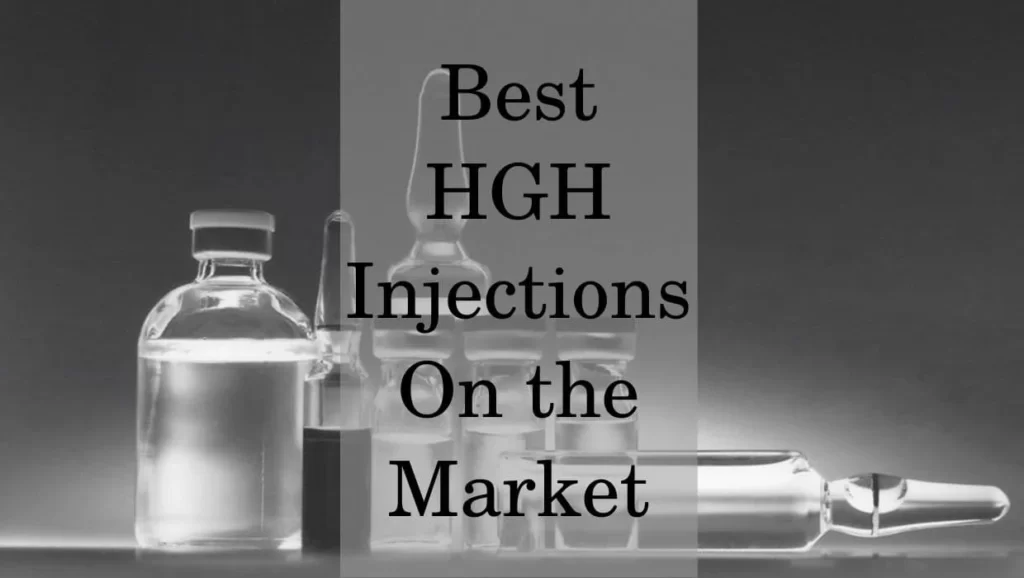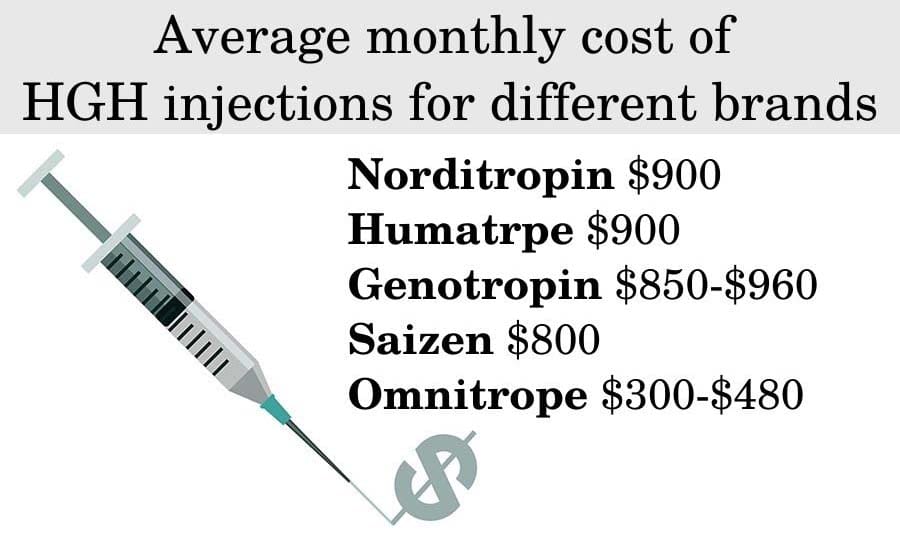Human growth hormone (HGH) is a peptide hormone secreted by the pituitary gland that stimulates growth, cell reproduction, and regeneration. As a prescription medication, HGH treats growth problems in children and growth hormone deficiency in adults.
However, HGH has also gained popularity as an anti-aging therapy and performance enhancer, leading to high demand and limited supply. This results in extremely high costs, making HGH treatment unaffordable for many patients.
This article examines the factors contributing to the steep pricing of HGH products. It provides an overview of HGH and then delves into the costs of manufacturing, regulatory, marketing, and healthcare systems that drive the prices. The role of patents, international price disparities, and access issues are also explored.
Finally, potential solutions such as biosimilars, generics, and regulatory changes are proposed to improve the affordability and accessibility of HGH therapy.
Understanding Human Growth Hormone

The anterior pituitary gland produces human growth hormone (HGH), and is crucial in stimulating tissue growth, muscle mass, bone density, and metabolism. As a prescription medication, synthetic HGH is bioidentical to the natural hormone and used for:
- Treating growth disorders in children – HGH injections can help increase height in kids with growth hormone deficiency or short stature.
- Adult hormone deficiency – HGH replacement therapy is used to improve the symptoms of adult-onset GHD caused by a pituitary tumor or injury.
- Anti-aging and athletic performance – HGH gained popularity due to its ability to increase lean muscle mass, decrease body fat, and enhance exercise capacity1.
While HGH has demonstrated benefits for muscle development and weight loss, its anti-aging effects are still under debate. The potential risks and long-term safety of taking HGH have yet to be fully discovered.
Factors Driving Up the Cost of HGH
There are many reasons why both pharmaceutical and recombinant HGH command such high prices, especially in the United States.
Manufacturing and Production
- Producing HGH using biotechnology and recombinant DNA methods is complex and costly. Highly specialized facilities and equipment are required2.
- Ensuring product quality control, sterility, purity, and potency adds to production expenses. Each batch undergoes extensive testing.
- Total manufacturing costs per gram of HGH can range from $100 to $1,000.
Regulatory Approvals and Clinical Trials
- Gaining FDA approval requires significant investments in clinical trials to prove safety and efficacy. The cost to develop each new drug is estimated at $2.6 billion.
- Clinical trials, research, and drug discovery necessary for regulatory approval are costly for pharmaceutical companies.
- Approval can take 10-15 years from early discovery to market launch.
Marketing, Distribution, and Pricing Strategies
As brand name drugs, HGH medication is heavily marketed directly to consumers and physicians. Companies spend billions on advertising, marketing, and salesforce.
Complex distribution networks, pharmacy dispensing fees, and company sales forces also add hidden costs.
Pharma can set high launch prices for new HGH brands based on perceived value and willingness/ability of insurers and patients to pay. As biologics, HGH cannot be automatically substituted with generics at the pharmacy like other drugs.
The Role of Insurance Coverage

Due to the high cost, insurance coverage determines accessibility and who can afford HGH. Most insurance plans will not cover HGH prescribed for anti-aging or athletic use.
- Medical reasons like growth deficiencies in children are more likely to be reimbursed by insurance after diagnosis confirmation.
- For adults diagnosed with GHD, coverage beyond the initial years may require reconfirmation of the hormone deficiency.
- Out-of-pocket costs for uninsured patients can reach $500 to over $1,500 monthly for HGH treatment.
- Even with coverage, copays for HGH injections or pens can still be expensive for patients.
Patent Protections
Patents grant market exclusivity and prevent competition from lower-cost generics. Most major HGH brands are patented:
- Pfizer’s Genotropin – Several patents on Genotropin (somatropin rDNA origin) extend market exclusivity3 until at least 2024.
- Novo Nordisk’s Norditropin – Core patents cover Norditropin (somatropin rDNA origin) through 2024.
- Eli Lilly’s Humatrope – Humatrope (somatropin rDNA origin) patents provide exclusivity until 2026.
Generic HGH versions are not yet available except outside the U.S. Once core patents expire, biosimilar alternatives are expected to reduce cost.
International Price Disparities
- The prices pharmaceutical companies charge for HGH vary enormously around the world.
- In the U.S., Humatrope costs around $2,000 for 9mg. The same 9mg dose may cost $1,000 in Canada but only $150 in France.
- Due to negotiating power and price controls, national health systems in other countries pay much less.
- Importing or purchasing HGH from overseas pharmacies in Mexico or Canada can lower costs for U.S. patients. However, legal risks exist.
Impact on Patient Access and Affordability

The high cost of HGH severely limits patient access and affordability, especially for the uninsured. It negatively impacts treatment adherence and health outcomes.
- Financial toxicities – Patients face difficult trade-offs – buying HGH vs other essentials. Cost puts treatment out of reach for many.
- Non-compliance – Patients may split or skip doses due to the high cost. It reduces effectiveness and raises safety issues.
- Inequities – Wealth enables access to HGH therapy. Uninsured and lower-income patients struggle to afford treatment.
- Bankruptcy or debt – Patients have resorted to mortgaging homes, credit cards, and personal fundraising to cover expensive HGH therapy.
Emerging Solutions to Reduce HGH Costs
Several strategies and solutions show promise for improving the affordability of HGH in the future:
- Biosimilars – Similar versions of biologic drugs like HGH. Biosimilars enter the market after patent expiry and provide cost savings4.
- Improved regulations – Policies allowing importation, price negotiations, and price controls could lower costs substantially.
- Increased transparency – Requiring pharma companies to disclose and justify price hikes and R&D costs.
- Consumer education – Raising patient awareness of cheaper alternative brands and sources.
While human growth hormone manufacturers will cite high development costs to justify the lofty price tags, ultimately, corporate profits and monopolies enabled by patent protections are major factors allowing pharma to charge exorbitant sums in the U.S.
By increasing competition, regulating prices, and targeting inflated R&D and marketing costs, the price of HGH could be reduced to align with the actual manufacturing costs and ensure fair access for all patients.
U.S. HGH Pricing Vs. Costa Rica and Mexico
The cost of HGH in the U.S. is significantly higher than in medical tourism locations like Mexico and Costa Rica. For example:
- CVS RX Norditropin HGH – $1,312.18
- Anti-Aging and Wellness HGH in Mexico or Costa Rica – $550
HGH can cost 60% less in these countries compared to the U.S. due to factors like direct government price negotiations and lower markup through integrated healthcare systems.
How Much Does Growth Hormone Cost in Costa Rica & Mexico?
In Mexico and Costa Rica, the monthly rate for Norditropin HGH is approximately $550.
This is almost 3 times less than the $1,300+ monthly cost for the same Norditropin HGH in the U.S.
Costa Rica and Mexico are able to offer significant savings on medications including HGH.
Is Growth Hormone from Mexico & Costa Rica Safe?
HGH from licensed Mexican or Costa Rican pharmacies that dispense products from major global pharmaceutical companies like Pfizer, Novo Nordisk, etc. are just as safe and legitimate as those purchased in the U.S.
Safety risks only become a concern if considering:
- Imported HGH without a prescription
- Counterfeit HGH from unregulated sources
- Abusing or self-administering HGH
When prescribed properly and dispensed from reputable pharmacies, the medication itself is identical to HGH prescribed in the U.S. in terms of safety and efficacy.
HGH Costa Rica Medical Tourism & Clinical Therapy Expertise
Costa Rica provides high quality medical tourism for international patients seeking savings on treatments like HGH replacement therapy5.
Key advantages of HGH therapy in Costa Rica:
- Excellent medical infrastructure – JCI accredited hospitals and clinics
- Trained medical staff – Skilled endocrinologists and anti-aging experts
- FDA approved drugs – Branded bioidentical HGH like Norditropin
- Significant cost savings – Average 60% lower pricing for HGH
- Package deals – Offer integrated wellness like diet, fitness
How to Qualify for HGH Therapy?
To qualify for HGH replacement therapy, testing and clinical evaluation must demonstrate a growth hormone deficiency. This involves:
- Comprehensive blood testing – IGF-1, pituitary hormones, biomarkers
- Medical history and exam
- Review of patient symptoms/complaints
- Ruling out other underlying conditions
With confirmed GHD, a doctor may prescribe daily HGH injections to restore optimal levels.
The Rudman Study on HGH & Why HGH is so Expensive
The 1990 Dr. Rudman study in the NEJM demonstrated the anti-aging benefits of HGH in older men:
- Increased lean muscle mass by 8.8%
- Decreased body fat by 14.4%
- Improved skin thickness and bone density
This sparked explosive demand for off-label HGH as an anti-aging therapy. However, high consumer demand combined with limited manufacturing capacity and monopoly patent protections enabled pharmaceutical companies to charge very high prices for synthetic HGH – contributing to the excessively expensive cost of HGH today.
What’s the Most Popular HGH Brand and Its Cost?

Norditropin by Novo Nordisk is the most popular and widely prescribed HGH brand.
- In the U.S., Norditropin costs around $1,500 per month for a standard 10 mg daily dose.
- The same Norditropin may cost $500 or less per month in Mexico/Costa Rica.
Novo Nordisk has patents on Norditropin extending through 2024, limiting competition. Biosimilars may eventually reduce Norditropin costs.
Conclusion
In summary, the complex biotech production process, extensive clinical trials, regulatory hurdles, marketing costs, and favorable insurance reimbursement enable pharmaceutical companies to charge extremely high prices for human growth hormones. Lack of price controls and competition from generics further exacerbate the situation. As a result, HGH remains beyond the financial means of many patients.
However, emerging solutions like biosimilars, improved regulations and transparency, consumer education, and imported alternatives provide hope that HGH treatment may become more affordable and accessible in the years ahead.

Mike Lilley is the author of many articles and reviews on our site. He is a fitness & bodybuilding blogger and co-founder of Boost Hormone. He writes product reviews based on the results of scientific research. From the great variety of information and products in this niche, he recommends only those that include science-based nutritional ingredients. Find Mike Lilley at SelfGrowth.
- https://www.health.harvard.edu/diseases-and-conditions/growth-hormone-athletic-performance-and-aging – Growth hormone, athletic performance, and aging [↩]
- https://www.ncbi.nlm.nih.gov/pmc/articles/PMC3564302/ – Defining the difference: What Makes Biologics Unique [↩]
- https://www.ftc.gov/sites/default/files/documents/publicevents/emerging_health_care_competition_and_consumer_issues/lhortonlv.pdf – The European Experience With Follow-on Biologics Legislation [↩]
- https://www.sciencedirect.com/science/article/pii/S0049017221002171 – The cost savings of biosimilars can help increase patient access and lift the financial burden of health care systems [↩]
- https://antiagecr.com/how-much-does-hgh-cost-in-costa-rica/ – Cost of HGH in Costa Rica [↩]




